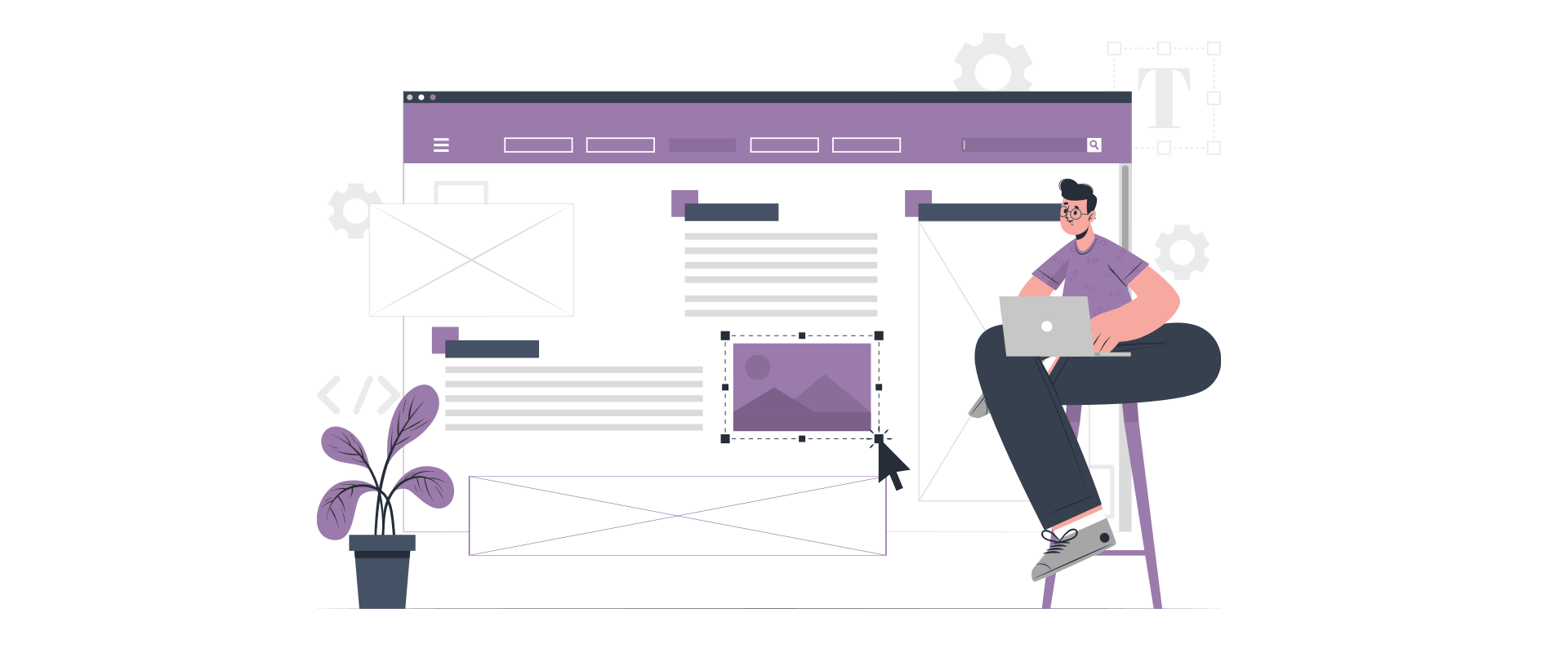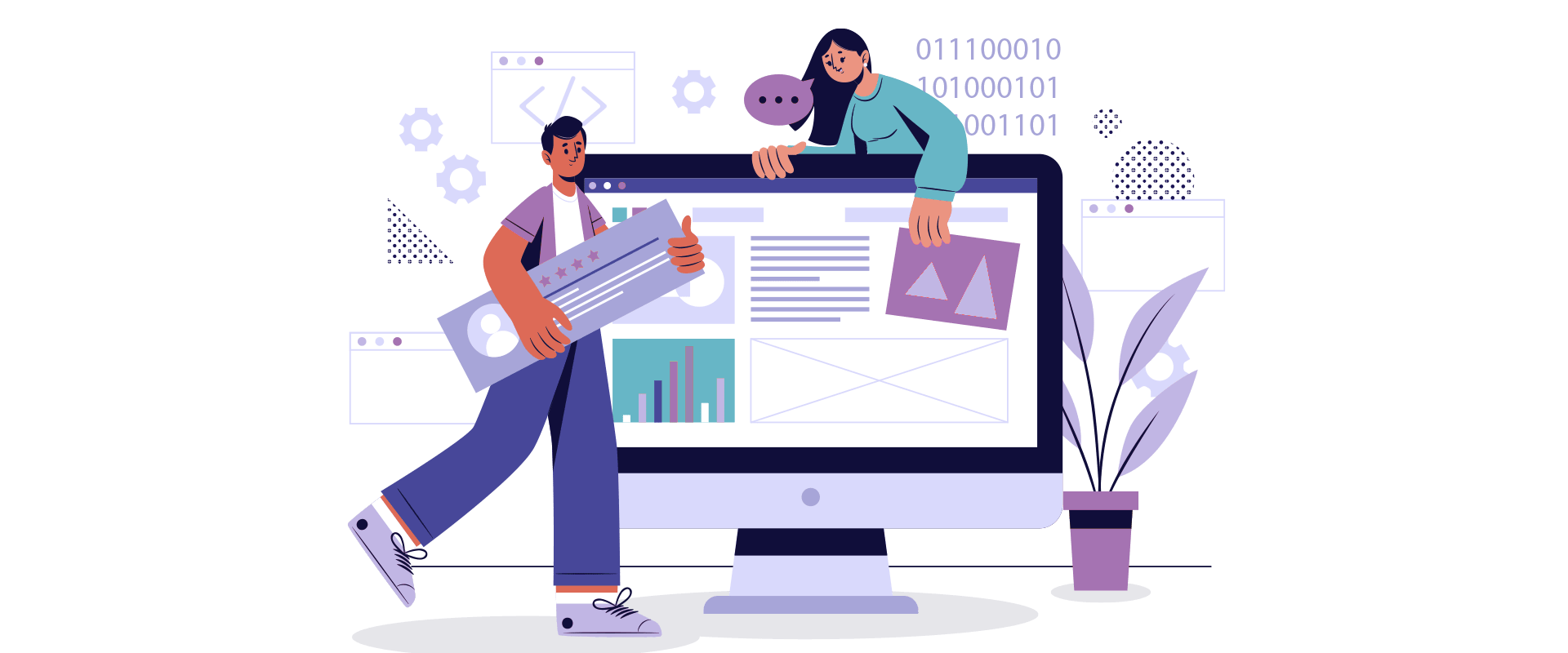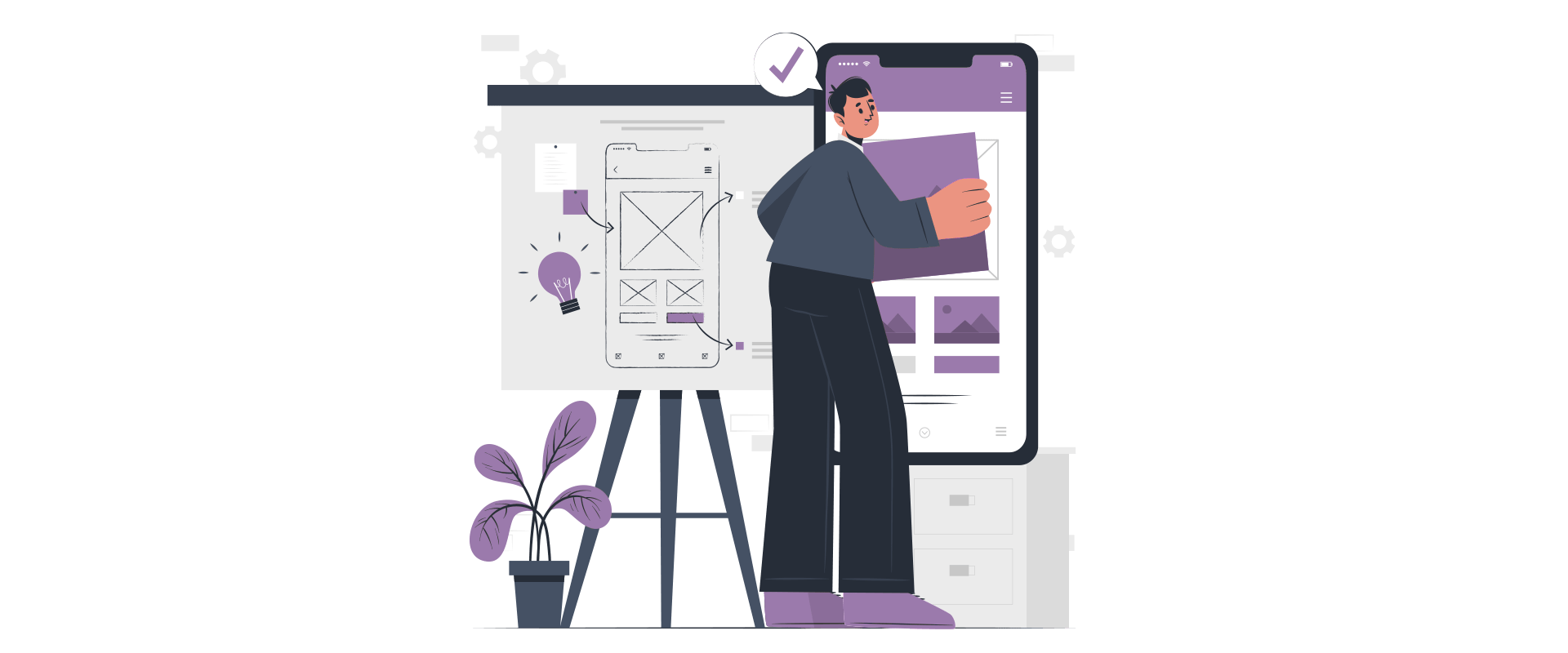Web designers are highly sought after in today’s digital world. They create websites that are attractive and easy to use, and they’re often the first point of contact between a business and its customers.
Web designers may work with large and small companies, but their role is essentially the same: to build websites that meet their client’s needs. In this article, we’ll look at what web design involves and how long it takes to become a web designer.
Definition of a Web Designer

A web designer is a person responsible for the appearance and function of a website.
Web designers are involved in creating a website, from the initial concept to the finished product. They’re responsible for everything you see on your screen: from how it looks to how it behaves.
A web designer’s skillset includes graphic design, interaction design (how people interact with the site), content strategy (what kind of information should be included), and coding/development (putting together all those elements).
The Role of a Web Designer
In 2023, web designers will be responsible for the visual appearance of a website. They work with the client to create wireframes and prototypes, then implement those designs by coding them into HTML5 or CSS3 code.
They must also decide on a color scheme and fonts that fit their brand identity and choose images, animations, videos, and other media for their site.
Key Skills and Expertise
Web design is a multi-disciplinary field, meaning that web designers need to communicate effectively with clients, stakeholders, and developers. They must be able to create wireframes and prototypes for their designs and make changes based on feedback from these groups.
Web Design Process
The web design process is a creative process, but it’s also collaborative, technical, and iterative. It’s an ongoing process that you’ll constantly be working on to improve your skillset and grow in the industry.
The first step of any web project is determining what you want your site to do for you (and who should be involved).
This could include defining goals or objectives based on research into competitors’ websites–or talking through some ideas with your client over coffee! Once those goals have been established and agreed upon by all parties involved (you included), it’s time to move on wireframing the user experience flow through mockups or sketches on paper or whiteboards before moving onto actual coding pages in HTML/CSS/JS languages like Bootstrap 4 or Foundation 6 which provide frameworks for building responsive layouts quickly without having too much code knowledge required upfront.
Responsive Web Design
Responsive web design is technique web designers use to create websites that adapt to the size of the device used to access them. In other words, it allows you to make your website look great on any screen size, from small mobile devices to desktop monitors.
RWD is based on fluid grids, flexible images, and media queries. Fluid grids allow us to create layouts with relative widths based on percentages instead of fixed pixel values; this means we can easily adjust them for different display sizes without having to reflow our entire layout every time we change from one resolution range (like mobile) into another (such as a tablet).
Flexible images mean we’re not limited by file sizes when designing content: thanks again, largely due to CSS3’s support for multiple background images within elements such as divs/rows, etcetera. There are plenty more benefits besides these two, but I’ll leave those until later since we haven’t even talked about what exactly “responsive” means yet!
Web Accessibility
Web accessibility is important because it helps users and businesses. Users can easily navigate your website if you make it accessible, making them happier with their experience. Web accessibility also helps businesses ensure they don’t lose potential customers because of a poorly-designed website..
Collaborating with Web Developers
As you get more experience, you’ll be responsible for working with web developers. Web designers and web developers work together to create a website. The designer is responsible for the visual design of the site. At the same time, the developer is responsible for ensuring it works properly regarding technical aspects like code and functionality.
Web designers and web developers should work together to ensure their projects meet user needs and business goals. You must collaborate effectively with other team members so everyone stays focused on achieving their goals while still delivering great user experiences.
The Future of Web Design
The future of web design reflects the technology that powers it. As we move into a more technologically advanced world, our websites must adapt to keep up with changing trends and new ideas. Here are some things you can expect from web designers in 2023:
- AI-powered websites
AI (artificial intelligence) will play an important role in website development; not only will AI make your site more accessible by translating texts into different languages automatically, but it can also help detect security issues and provide insight into how well visitors interact with your site’s content.
- UX design for mobile devices
With mobile phones becoming increasingly powerful, there’s no reason they shouldn’t be able to handle all sorts of tasks traditionally reserved for desktop computers–including browsing websites! Many prefer using their phones to laptops because they can access information quickly wherever they go (and sometimes even get work done while standing up).
It’s no wonder why companies like Apple have focused so much time on developing new ways for users’ fingers instead of desktops’ keyboards…
FAQs
Here are some of the top questions about a web designer:
What qualifications do I need to become a web designer?
To become a web designer, you need to have good problem-solving skills and be able to think creatively. This means you should have a Computer Science or Information Technology (IT) degree.
You’ll also need to understand how users interact with websites and what they expect from them. You’ll need to know how websites are built, so we recommend taking some programming classes as part of your course at university.
Finally, you must communicate your ideas well by creating wireframes or mockups for clients before they sign off on the final product.
How long does it take to learn web design?
It depends on the person. Web design is a skill that can be learned, but it takes time and practice to become proficient at it.
A good web designer will have a portfolio of previous work they’ve done for clients, or you may want to ask them for references from people they’ve worked with. You’ll want to ensure that your potential employer has enough experience in this area so that you know they’re capable of doing what needs to be done before you start working together on anything serious.
What are some common challenges faced by web designers?
Web designers face a lot of challenges, especially when it comes to creating websites for clients. They need to be able to understand the needs and goals of their clients, as well as create visually appealing websites that meet those needs. This cannot be easy because every business is different–some want more sales, more traffic, etc.–but all web designers need basic knowledge about how the internet works to do their job well.
Is coding knowledge necessary for web designers?
While it is true that a web designer’s job description includes creating and designing websites, it does not necessarily mean that they need to know how to code.
A web developer builds the actual website while working with a designer who provides instructions on how to build it. This relationship is important because both parties are responsible for creating an effective and functional site that caters to their clients needs.
How does web design differ from web development?
If you’re looking for a career in web design, it’s important to understand the distinction between a web designer and a web developer. While both roles are crucial to creating an effective website, they have very different responsibilities.
Web designers are responsible for creating the look and feel of a website. This includes everything from selecting fonts and colors to choosing which images should be displayed in certain areas (if any)
Their job also involves working with clients to get feedback on their designs so they can be tweaked until everyone is happy.
Web developers work behind the scenes on code that powers websites’ functionality–they’re not concerned with how pretty your site looks but rather how easy it is to use and navigate through!
In Conclusion
Web design is a rewarding career that has many growth opportunities. If you are interested in becoming a web designer, there are several things that you should consider first.
First of all, ensure you have the skills and expertise required by the job description. Second, ensure that there is an opportunity for growth within the company where you want to apply (this could include additional training programs).
Finally, remember that it takes time before anyone can become proficient in any new skill set – so don’t give up hope if things don’t go smoothly at first!
Need a specialized web designer for your business in California? Don’t hesitate to get in touch with PurpleZ and get a FREE marketing audit today!





